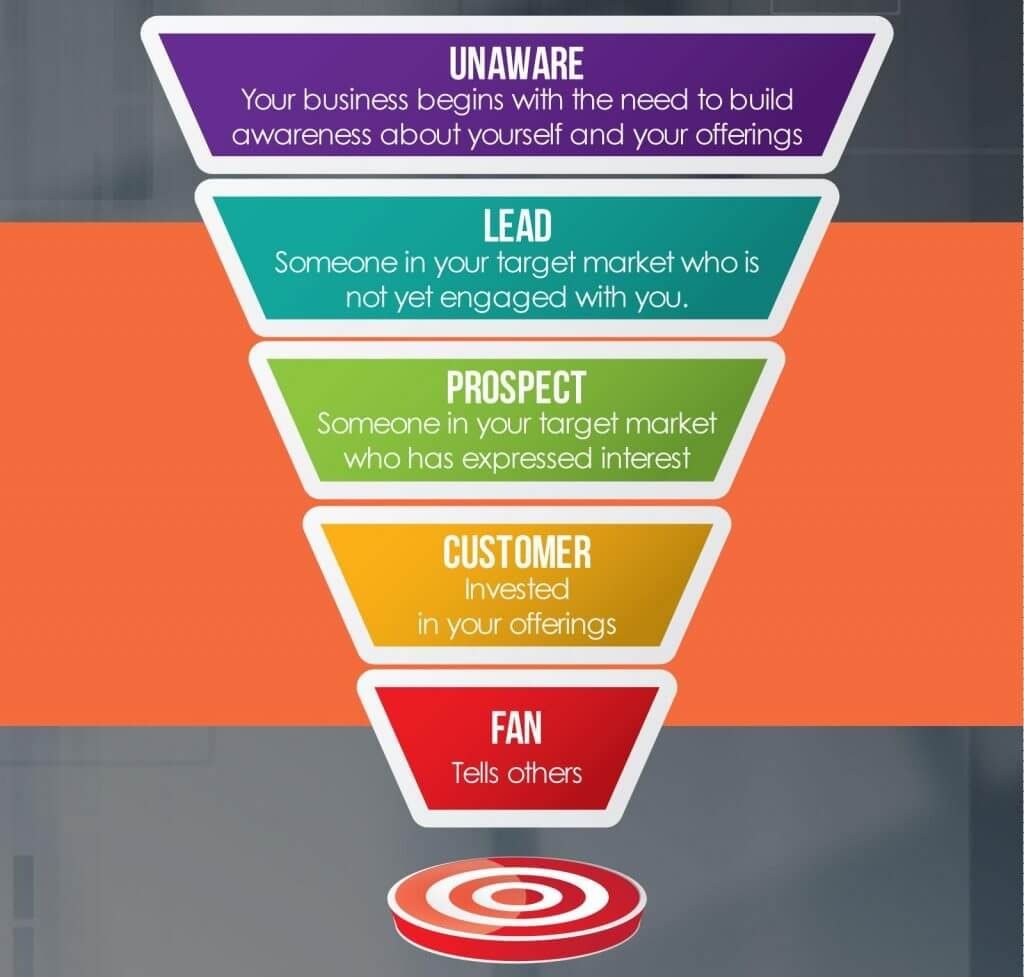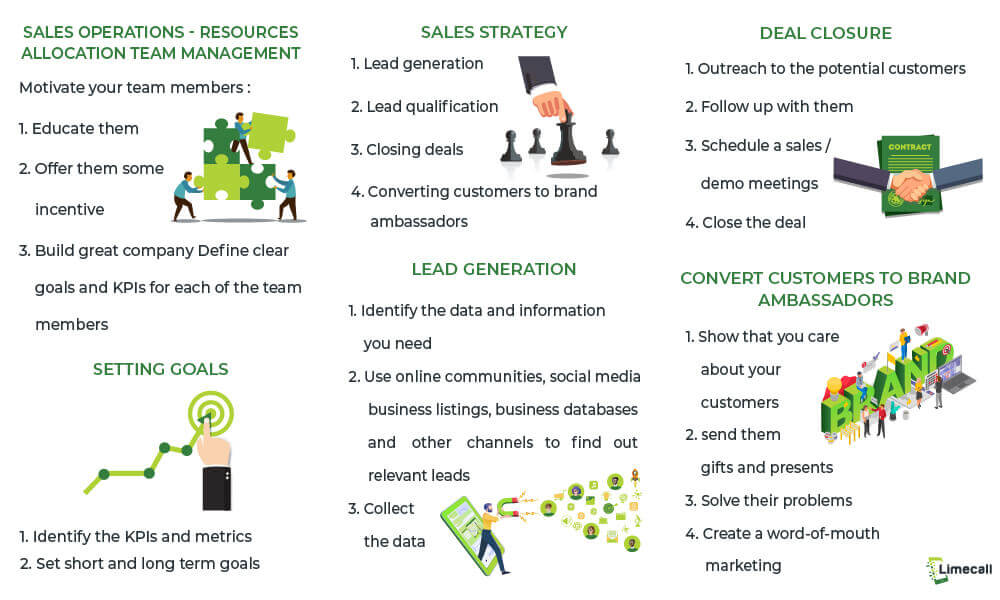It’s very tough to organize your sales management process and make it to work smoothly without any distractions. Putting your team, resources and strategies in the same line is exhausting and time consuming – but it needs to be done in order to improve your sales and gather better revenue.
If you find yourself struggling with creating the perfect sales management process – this is a great article for you.
By the definition, sales management is the process of maintaining a sales force, coordinating sales resources, operations and implementing sales techniques that allow a business to constantly grow.
If you don’t know how to manage your people, boost their productivity, performance, create amazing sales strategies and sell to your customers, this is the place where will you find all your answers.
We will go through the basic elements of managing sales teams, creating sales strategies, and selling to your customers.
Long story short – at the end of this article, you will be able to apply all the strategies we mentioned here – immediately!
Let’s get started!
In short, the sales management process consists of three parts:
There is no great CEO without the team behind him who will help him to execute his ideas.
There is no great company that doesn’t have converting sales strategies.
There will be no great results without in-depth analysis and data.
It’s the same for the sales management process too.
Good sales operations start with a good team.
“Am I good at maintaining my team and resources?” – is the first question you need to ask yourself if you want to optimize your sales management process.
Good team and good resource allocation is the first step towards refining your sales and converting more leads into customers.
Preparing, coaching and motivating your team members is crucial.
Once, when I had a meeting with the Alex Jotic, CEO at SkyHighGrowth – sales and outreach agency, he told me that a great sales process is defined by the team’s performance and productivity.
I’m paraphrasing:
If you want to boost your sales, you must focus on your teammates’ desires.
What do they want?
Is it more education, a bigger salary, some incentives or bonuses? In any case, we found that our employees are more effective if we provide them with some incentives.
Whenever someone closes the deal, he gets 10% of the client’s fee as long as it remains to be the client.
In any case, we’ve done our research, and here’s what can you do to motivate your team members.
Invest in your team’s education and coaching. You can buy some courses or pay them tickets to some conferences or meetups.
Try to offer them some incentives or bonuses. This will make them hungry.
Every day, set clear goals and targets with your teammates, and make sure that everyone did his duties.
Invest in good tools that will make the sales management process and their job easy. For example, buy better CRM, lead generation or email outreach software.
And at the end, my favourite tip for motivating your salespeople – buy them a doughnut whenever they close their highest deal.
Check our: Sales Training Ideas
We will describe this stage deeply further in the article, but let us mention the most important things.
Even if you have a great team – you will achieve no results if you have poorly defined strategy or if you don’t know what you’re doing.

The most important part of your sales strategy is your sales funnel.
Sales funnel is a visual sequence of stages you need to go through with your prospect if you want to close the deal.
Sales funnel is different from company to company, and from industry to industry.
How will your sales funnel look like mostly depends on your target audience and your product/service.
Some general sales funnel looks like this:
Long story short, every step of your sales funnel and user journey is essential if you want to refine and optimize your sales management process.
Sales strategy is based on four main pillars:
We will talk more about each of these four pillars later in the article
It can always be better.
Even if your sales team achieves amazing results – they can do it better.
That’s the reason why sales analytics, reports and in-depth data are playing a significant role in a sales management process.
Just like in every other department of your company, there are some KPIs and metrics you should measure for your sales too.
These metrics define is your sales management process effective or not:
There are countless KPIs you can look for, but these are just the basic ones.
Having clear insights and deep understanding of your sales management process will help you to improve and optimize it.
Try to test as much as you can.
For example, you can A/B test different cold email outreach templates or sales letters. Find the gaps in your sales management process and make a room for improvement.
At the end of the week or month, prepare different reports and data, and schedule meetings with your sales team. Discuss what can be better.
Conducting great lead generation is the first step towards getting customers.
If you don’t know to whom to sell, then, how do you expect to have any sales at all?
Lead generation is the process of collecting data and contact information about your most ideal buyer persona.
There are different ways to generate your leads, and we will mention the most effective ones, but first, let us first explain what information you should be looking for.
There are several questions you need to ask yourself before contacting your leads:
Having answers to these five questions will help you to better understand your ideal buyer persona, and to easily generate your leads.
For example, if you find out your ideal buyer persona, but he already has a similar solution like yours that solves his problems, do you need to waste your time and efforts on him?
Of course not.
These 5 answers will help you to qualify your leads even before you outreach to them.
Now when we know what is the situation, let’s see some data parameters and information you should look about your potential leads.
The data you should be looking for mostly depends on the industry, product and your ideal buyer persona, but here are some of the most common things you will need:
Some other data worth mentioning (that depends on your industry, and buyer persona) are hobbies, life events, company stage (seed, A, B, C), number of customers, retention, churn, website visits, etc.).
Write down how your most ideal buyer persona looks like, decide what data you will need and what are his paint points and desired outcomes.
Prepare a spreadsheet (or CRM) in advance. Put in all the columns you will need.
Now when we know what we’re looking for, it’s time to see some of the most effective ways to generate leads.
There are numerous ways to conduct a lead generation.
Some of them are done manually, while others could be generated in real time.
For example, perhaps you might look into your local business databases and business listings.
If your desired customers are small and medium businesses in your city, you might consider finding your potential customers on Yelp or Foursquare.
On another way, if you’re a B2B SaaS business and you’re targeting other IT and SaaS companies, online databases like AngelList, Crunchbase, Capterra and other, can be a great spot for you.
Another way to find out your desired customers on the internet is to look at different communities, channels and social media – this can be extremely useful for e-commerce businesses.
Try to find out your target customers’ communities and places they’re gathering. For example, if you have an e-commerce shop about pugs, some community like this one can be a great fit for you:

Now when you have the list of interesting online communities where you can find your target audience, it’s time for lead generation.
The best way to generate leads with online communities is to engage with people as much as you can. Try to share valuable content. For example, if you have a pug store, you can create an amazing piece on “Everything you need to know about breeding healthy and playful pugs”.
You can also try to scrape data about the people inside the group, and use it for your cold email outreach.
LinkedIn can also be a great source for lead generation, especially if you have a Sales Navigator.
Give a look at online communities and groups. If you’re car merchandise, find out relevant Facebook groups about car selling.
Finding emails can be a really hard and thought process. Chances are very low that you will find your prospect’s personal email on its website.
Instead, you can use some of the email finder products like Voila Norbert or UpLead to save your time and get desired results.
When it comes to real-time lead generation, the process is a little bit more complex and time-consuming.
If you’re trying to manually generate leads in real time, you will need to put a lot of efforts. For example, if someone constantly engages with your brand on social media, he might be considered as a qualified lead. But in order to find out this, you will need to pay more attention to every follower you have.
Of course, there are other ways to generate your leads automatically.
For example, you can use callback software (like Limecall), to generate and qualify your website visitors.
Check our: callback apps for travel agency
Sit down and research the places on the internet where you can find your most ideal customers. As mentioned above, that could be some of the online communities, forums, social media channels, or business listings and databases.
Identify your desired leads and put their information and data into a spreadsheet (or CRM) you already prepared.
The more prospects and leads you have, the more work you will need to do. Sometimes, quality is better than quantity.
Identifying unqualified leads at the early stage will have a high impact in the near future.
On this way, you will be able to save your time and efforts, so you can focus on the most promising leads.
Of course, you can try to minimize the time you need for lead qualification if you, during the lead generation process, focus only on the most ideal leads.
The best way to qualify your leads and optimize your B2B sales management process is to ask the right questions during their buyer journey.
Here you can find the list of lead qualification questions.
On another hand, you can also qualify your leads with the callback software. It is useful both for lead generation and lead qualification.
This is one of the most crucial parts of your sales management process. This is the moment where you either close the deal or not.
In most cases – deal closure starts with the outreach and cold contacting your potential customers.
Deal closure is based on a few stages – depending on your product/service, target audience, market and industry:
Cold Outreach is the moment where you’re making the first contact with your potential customers.
This could be either through the email, phone or by engaging with your leads on social media or other channels.
There are numerous speculations about how the perfect cold email template should look like. But for all of them, one thing is common.
However you choose to write your email template, you must pay attention to the personalization.
We’re living in an era of information. Everyone gets hundreds of promotional messages each day. Why should someone read your email?
Ask yourself that before contacting your potential customer.
The main reason why you should gather as much data as possible about each of the leads is that you will be able to create a more personalized and engaging message.
There are huge chances that someone will not respond to your cold email. That’s the moment when follow-ups are coming to the scene.
Now, the most important thing about cold email was personalization, but for the follow-ups, that’s value.
You should tend to provide as much value as you can in your follow-up emails.
Depending on your product and industry, you might have demo/sales meetings or not. For example, if you’re an agency, you will probably need to have several meetings and conversations with your lead before you can close the deal.
On the other hand, if you’re selling an affordable or a low margin product, demo/sales meetings aren’t necessary.
A/B test different cold email templates and try to find the most converting one. Try to personalize your cold outreach emails as much as you can. For example, you can mention your common hobbies, interests or even ask your potential lead about the weather in his city.
If your lead doesn’t respond, send him 2-3 follow-ups in a timeline of ten days. But remember to add value in your follow-ups. For example, you can send him the link towards your link magnet, or simply offer him your help (for free!)
The goal of every sales management process and sales funnel is to convert your customers into brand ambassadors or affiliates.
On this way, you will get the best marketing method – word of mouth.
There are numerous ways how to convert your customer to brand ambassadors, but here are some of the best performing tactics:
Pay close attention to your customer’s needs and be sure to solve his problems. Clearly, show him your gratitude.
The toughest part is making every stage of the sales management process playing smoothly with each other.
Because of that, here is a little infographic and a recap of everything you need to know (and do), in order to refine and optimize your sales management process.

, May 21, 2019, Ugljesa Djuric

Top rated callback automation platform that connects your website visitors to your team within 20 seconds through phone callback and whatsapp driving upto 40% more conversions.
Learn more